Novo Nordisk says in talks to acquire French device-maker Biocorp for $165M by Elise Reuter for MedTechDive.com, 5 June 2023.
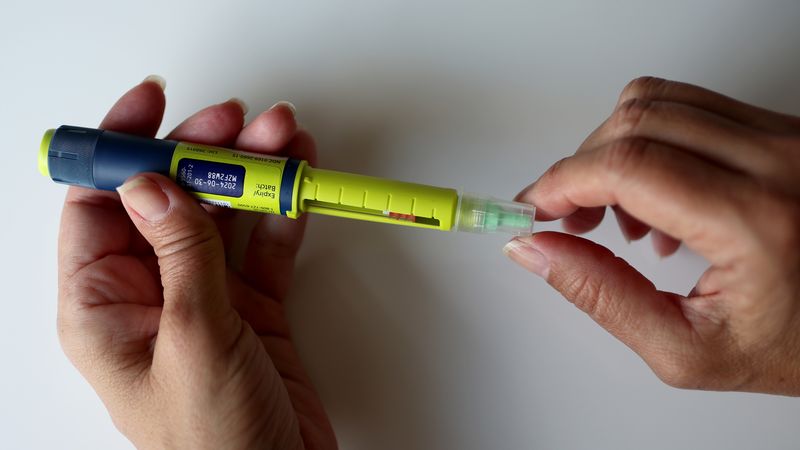 Novo Nordisk wants to innovate faster and develop new connected devices, and expects that Biocorp would complement its internal efforts, said Marianne Ølholm, Novo Nordisk’s senior vice president of devices and delivery solutions. Novo Nordisk will work with Biocorp to invest in new devices and drug delivery solutions for people with chronic diseases, according to the statement.
Novo Nordisk wants to innovate faster and develop new connected devices, and expects that Biocorp would complement its internal efforts, said Marianne Ølholm, Novo Nordisk’s senior vice president of devices and delivery solutions. Novo Nordisk will work with Biocorp to invest in new devices and drug delivery solutions for people with chronic diseases, according to the statement.
Some of Biocorp’s connected devices include a smart cap to monitor inhaler use, a smart pen injector, and a smart cap for pen injectors. Biocorp received clearance from the Food and Drug Administration for the smart pen cap, called Mallya, last year. Novo Nordisk had collaborated with Biocorp on developing and commercializing the device for people with diabetes starting in 2021.
Read more: Novo Nordisk says in talks to acquire French device-maker Biocorp for $165M
What does it mean to “Go Bionic?” podcast on Diabetes-Connections.com with Stacey Simms, 6 June 2023.

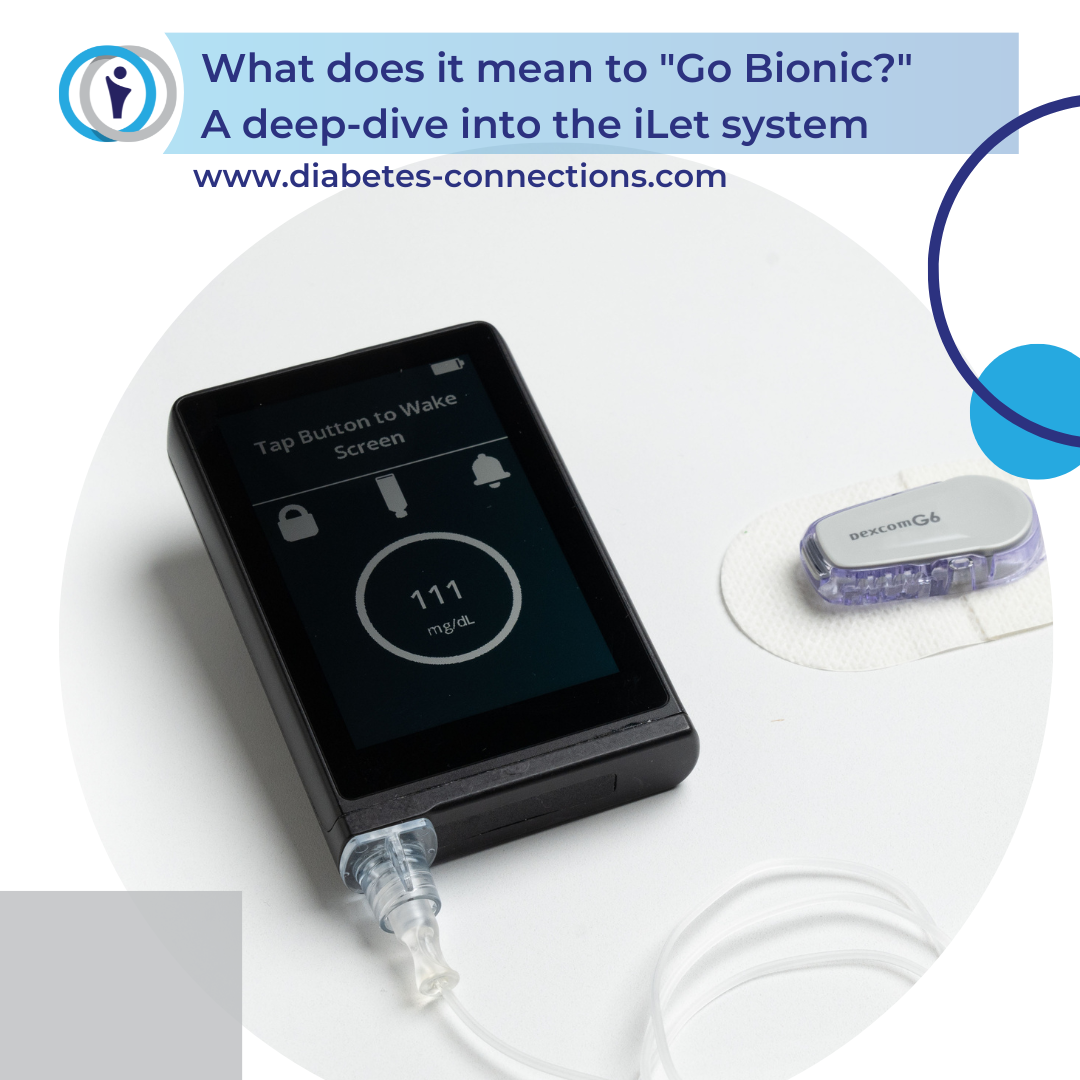 The newly FDA-approved iLet Bionic Pancreas is the most hands-off automated insulin delivery system to be commercially available. At set up, all you enter is your weight and the only interaction with the pump is to announce meal size, no carb counting.
The newly FDA-approved iLet Bionic Pancreas is the most hands-off automated insulin delivery system to be commercially available. At set up, all you enter is your weight and the only interaction with the pump is to announce meal size, no carb counting.
Stacey talks with Beta Bionics CEO Sean Saint. We go through this pump system in lots of detail, talk about future plans – yes we’ll talk dual-chambered pump which is the original design here – and get a little philosophical about the idea behind a hands-off system… especially for those of us used to being much more in the driver’s seat.
READY to get ANGRY???
Alexander Zverev sounds off on French Open disallowing him to inject insulin on court by Dzevad Mesic for TennisWorldUSA.org, 6 June 2023.
 Alexander Zverev voiced his frustration after apparently anot being allowed to take insulin on the court during his French Open round-of-16 match. Zverev, 26, revealed last year that as a kid he was diagnosed with Type-1 Diabetes.
Alexander Zverev voiced his frustration after apparently anot being allowed to take insulin on the court during his French Open round-of-16 match. Zverev, 26, revealed last year that as a kid he was diagnosed with Type-1 Diabetes.
Zverev usually injects insulin on the court but apparently at the French Open, he was told he would need to leave the court to complete the action. But when Zverev was told earlier in the tournament that leaving the court to take insulin would count as a bathroom action, he started explaining that could put his health and well-being in danger since players are allowed to take only two bathroom breaks per match, while he sometimes injects insulin four or five times during the match.
“This question should not be for me. At ATP tournaments it is very easy. I inject the insulin on the court during the changeovers like you all see it regularly. Here in Paris, it is not allowed for me to be on the court. They said I need to leave the court. During my last match, they told me then this would count as a toilet break.
I replied: ‘Guys, come on! I only have two toilet breaks in a match but in a best-of-five-match sometimes I have to inject four, or five times’ So I told them that it can not be like this because this would mean that something is not allowed what is necessary for my well-being, for my life.
During the second round, there was a discussion so I went out to inject the Insulin. Then a supervisor entered the room that did not know about this and he got panic and said: ‘No, No you can’t do that. A doctor needs to come to inject it.
I told him that this is a wrongdoing because a normal doctor can’t help me, if he is not specialized. He has not the right data of how much I have to inject. So I told them: ‘Look I have had Diabetes since I am three years old I know exactly what to do’ But he just replied: ‘No, a doctor has to do it.
So this was another discussion. Today. I finally told them: please tell me what I need to do – and then it’s ok’ If I need to do it outside Im happy to do it there it just takes five seconds. Just let me do it, better on-court.
But they said it looks weird when I do this on court. But this is not a clever take because If I don’t do it, my life will be in danger. But they said it looks weird. I said: ‚How does it look like? That I dope myself?’ This discussion makes no sense,” Zverev said.
Still, it has been a very positive French Open for Zverev, who made the quarterfinal.
Read more:
Let’s Talk About High Blood Sugar by Eritrea Mussa for diaTribe.org, 19 May 2023.
 While the dangers of hypoglycemia (low glucose levels) are often discussed, fears around the effects of hyperglycemia (high glucose levels) often take a backseat. That’s because high blood sugar is considered more of a long-term danger.
While the dangers of hypoglycemia (low glucose levels) are often discussed, fears around the effects of hyperglycemia (high glucose levels) often take a backseat. That’s because high blood sugar is considered more of a long-term danger.
However, the reality is the health impacts of hyperglycemia can be devastating. For a person living with diabetes, hyperglycemia is sometimes defined as blood sugar levels of 180 mg/dL or higher. This can be dangerous over an extended period of time and lead to complications like kidney damage, heart problems, and cognitive decline.
At a scientific session around fear of hyperglycemia and its impacts at this year’s Advanced Technologies & Treatments for Diabetes conference in Berlin, Alon Liberman, a pediatric psychologist and researcher with Schneider Children’s Medical Center in Israel, discussed the need for more research around this underexplored topic. Liberman stressed that there just isn’t enough literature on fear of hyperglycemia and the impact on both people living with diabetes as well as their loved ones. “With one Google search, 35,000 articles for ‘fear of hypoglycemia’ appear,” Liberman said. “However, hyperglycemia can be more harmful and there are only 53 articles – and none of them deal with hyperglycemia in children and their parents. Why?”
A study conducted by Dr. Nataša Bratina, a pediatric endocrinologist at University Children’s Hospital, Ljubljana in Slovenia, as well as other researchers found that a parental fear of hypoglycemia is significantly associated with worse glycemic control in children with type 1. The study also suggested that parents of children with type 1 diabetes with greater levels of fear of hypoglycemia may lead to deliberate maintenance of higher glucose levels.
Read more: Let’s Talk About High Blood Sugar
Using a diabetes medication after testing positive for SARS-CoV-2 reduces risk of developing long COVID by 40% was published by Lancet and shared by MedicalXpress.com, 8 June 2023.
 Taking a two-week course of metformin, a safe and affordable diabetes medication after testing positive for SARS-CoV-2 leads to 40% fewer long COVID diagnoses over the following 10 months, compared to individuals taking a placebo, finds a new study published in The Lancet Infectious Diseases journal.
Taking a two-week course of metformin, a safe and affordable diabetes medication after testing positive for SARS-CoV-2 leads to 40% fewer long COVID diagnoses over the following 10 months, compared to individuals taking a placebo, finds a new study published in The Lancet Infectious Diseases journal.
The long-term symptoms some people experience after SARS-CoV-2 infection, known as long COVID, are an emerging chronic illness potentially affecting millions of people around the world. Currently there are no proven treatments or ways to prevent long COVID, other than reducing the risk of infection in the first place.
This is the first phase 3 randomized controlled trial of a treatment for patients in the community that shows a medication can reduce the risk of long COVID when taken after testing positive for SARS-CoV-2.
Know Labs Completes Build of Portable Generation 1 Prototype for Non-Invasive Glucose Monitoring was reported by KnowLabs.co, 7 June 2023.
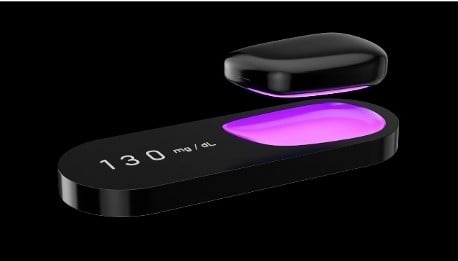 Know Labs (NYSE American: KNW), an emerging developer of non-invasive medical diagnostic technology, revealed the next stage in the development of its proprietary Bio-RFID™ technology – the Generation (Gen) 1 Device. Gen 1 incorporates Know Labs’ Bio-RFID sensor – which has been proven as technically feasible and stable in delivering repeatable results in measuring blood glucose when used in a lab environment – in a portable device. Currently, there are no medical-grade, commercially available, non-invasive means of measuring blood glucose. The completion of Gen 1 brings Know Labs closer to achieving its ultimate goal of delivering the world’s first FDA-cleared non-invasive blood glucose monitor for the billions of people living with diabetes and pre-diabetes worldwide.
Know Labs (NYSE American: KNW), an emerging developer of non-invasive medical diagnostic technology, revealed the next stage in the development of its proprietary Bio-RFID™ technology – the Generation (Gen) 1 Device. Gen 1 incorporates Know Labs’ Bio-RFID sensor – which has been proven as technically feasible and stable in delivering repeatable results in measuring blood glucose when used in a lab environment – in a portable device. Currently, there are no medical-grade, commercially available, non-invasive means of measuring blood glucose. The completion of Gen 1 brings Know Labs closer to achieving its ultimate goal of delivering the world’s first FDA-cleared non-invasive blood glucose monitor for the billions of people living with diabetes and pre-diabetes worldwide.
“The completion of Gen 1 marks a significant engineering achievement for the company and, more broadly, for innovation in medical diagnostics. Many have tried to non-invasively ascertain glucose and have not succeeded or remain years away from success. Know Labs and our world-class partners overcame incredible engineering complexities over several years and through hundreds of iterations to achieve this level of progress,” said Ron Erickson, CEO and Chairman at Know Labs. “The Bio-RFID sensor is a novel technology that is leading the way to an entirely new branch of science, and Gen 1 takes us closer to our goal of enabling a better way of life for people living with diabetes.”
Read more: Know Labs Completes Build of Portable Generation 1 Prototype for Non-Invasive Glucose Monitoring
Research on Residual Insulin
Residual insulin secretion in individuals with type 1 diabetes in Finland by Minna Harsunen, MD et al was published in The Lancet: Diabetes & Endocrinology, 5 June 2023.
 Contrary to the presumption that type 1 diabetes leads to an absolute insulin deficiency, many individuals with type 1 diabetes have circulating C-peptide years after the diagnosis. We studied factors affecting random serum C-peptide concentration in individuals with type 1 diabetes and the association with diabetic complications.
Contrary to the presumption that type 1 diabetes leads to an absolute insulin deficiency, many individuals with type 1 diabetes have circulating C-peptide years after the diagnosis. We studied factors affecting random serum C-peptide concentration in individuals with type 1 diabetes and the association with diabetic complications.
Although children with multiple autoantibodies and HLA risk genotypes progressed to absolute insulin deficiency rapidly, many adolescents and adults had residual random serum C-peptide decades after the diagnosis. Polygenic risk of type 1 and type 2 diabetes affected residual random serum C-peptide. Even low residual random serum C-peptide concentrations seemed to be associated with a beneficial complications profile.
Read study: Residual insulin secretion in individuals with type 1 diabetes in Finland
Importance of residual insulin secretion in type 1 diabetes by Jay S. Skyler for The Lancet: Diabetes & Endocrinology, 5 June 2023.
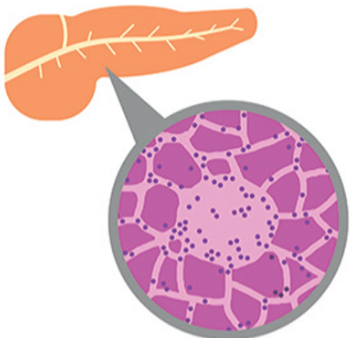 Finland has the highest incidence of type 1 diabetes in the world, which has led to many important studies of type 1 diabetes in the Finnish population and to the formation of several study groups.
Finland has the highest incidence of type 1 diabetes in the world, which has led to many important studies of type 1 diabetes in the Finnish population and to the formation of several study groups.
Several important observations were made.
-
-
- First, several factors—age at diagnosis, genotypes (particularly HLA), and autoantibodies—affected the rate of decline of random C-peptide. Others have also reported relationships with age at diagnosis, genetics, and autoantibodies with regard to the evolution of β-cell function, as assessed by C-peptide. In this regard, age at diagnosis is particularly compelling, with the slowest decline in those who were 10–15 years of age at diagnosis, the fastest decline in those less than 5 years of age at diagnosis, and an intermediate rate of decline in those 5–9 years of age at diagnosis.
- Second, Harsunen and colleagues observed better glycaemic control in people with residual random C-peptide, as has also been reported by the Type 1 Diabetes Exchange β-Cell Function Study Group.
- Third, perhaps the most important finding in this study is that residual insulin secretion is associated with lower HbA1c, lower blood pressure, lower cholesterol, and decreased frequency of retinopathy and nephropathy.
- Fourth, these studies used random C-peptide measurements, which might be particularly important for real-world clinical practice, in contrast to most studies of C-peptide which have used either fasting or stimulated C-peptide.
-
Read more:
How insect-inspired microphones are revolutionizing our hearing by Sade Agard for InterestingEngineering.com, 8 June 2023. I’m including this because hearing loss is a common complication (due to nerve damage) for T1Ds.
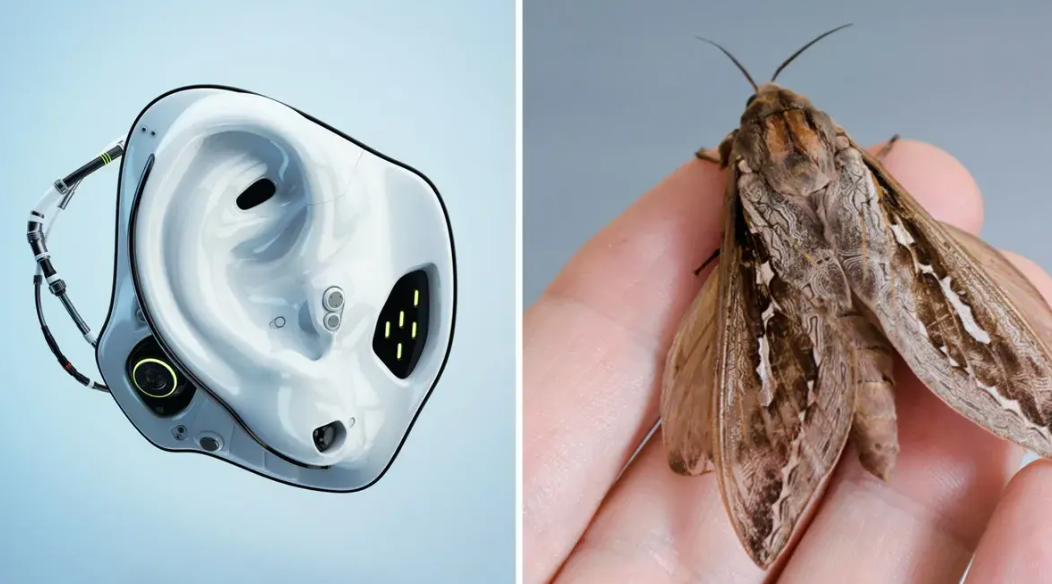 In the world of insects, where a multitude of fascinating adaptations exist, their hearing abilities often go unnoticed. Yet, hidden within the insects’ tiny bodies are unique auditory systems that rival those of larger, more complex organisms. Considering the hearing abilities of the parasitic fly, Ormia ochracea, for example, whose sense of directional hearing is second to none in the animal kingdom. Each of its ears— which are unusually connected – has two tiny membranes attached to a jointed stalk. The stalk acts as a directional amplifier. This adaptation allows the fly to accurately pinpoint the location of its prey by detecting the subtle differences in sound intensity and timing between its two ears.
In the world of insects, where a multitude of fascinating adaptations exist, their hearing abilities often go unnoticed. Yet, hidden within the insects’ tiny bodies are unique auditory systems that rival those of larger, more complex organisms. Considering the hearing abilities of the parasitic fly, Ormia ochracea, for example, whose sense of directional hearing is second to none in the animal kingdom. Each of its ears— which are unusually connected – has two tiny membranes attached to a jointed stalk. The stalk acts as a directional amplifier. This adaptation allows the fly to accurately pinpoint the location of its prey by detecting the subtle differences in sound intensity and timing between its two ears.
By exploring the mechanical principles behind such auditory adaptations and using cutting-edge 3D-printing technology, engineers and scientists are already unlocking the potential to revolutionize sound capture. They’re developing miniature, bio-inspired microphones. Dr. Andrew Reid, a lecturer, and chancellor’s fellow at the University of Strathclyde in the U.K., recently developed insect-inspired microphones that autonomously collect acoustic data. These innovations not only mimic the remarkable hearing abilities found in insects but also offer practical applications in various fields.
Read more: How insect-inspired microphones are revolutionizing our hearing
Non-invasive CGM watches. Is this a Dreamcatcher moment? by Tim Street for Diabettech.com, 6 May 2023.
Tim Street writes AMAZING reviews of tech … and this is true to form.
First of all, let’s start with a video, before we get into quite what the obscure reference in the title refers to. I recently came across this in my socials. https://www.diabettech.com/wp-content/uploads/2023/05/Screen_Recording_20230506_161211_Instagram.mp4
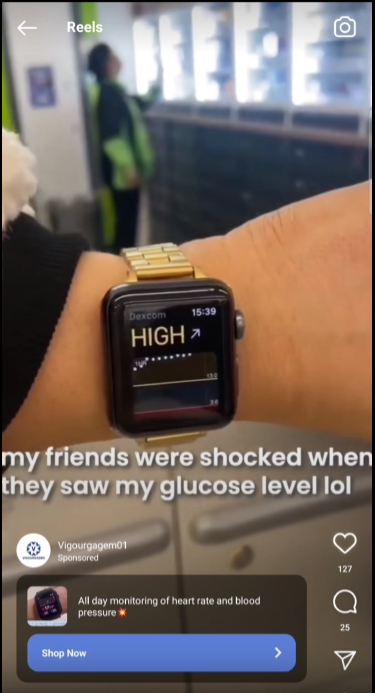 Notwithstanding the clear Dexcom image on an Apple watch, nor the terrible acting associated with the “high glucose” moment, this is very clearly an advert targeting those with diabetes and suggesting that a smartwatch with a non-invasive sensor could replace fingerpricks or medical-grade lightly invasive CGM.
Notwithstanding the clear Dexcom image on an Apple watch, nor the terrible acting associated with the “high glucose” moment, this is very clearly an advert targeting those with diabetes and suggesting that a smartwatch with a non-invasive sensor could replace fingerpricks or medical-grade lightly invasive CGM.
Is this a case of a Dreamcatcher moment? For those that don’t remember, SSDD, or “Same Shit, Different Day”, similar to the last watch that made this type of claim, or is it something that works? Having seen the advert, Diabettech had to follow up and ordered one. The following tells you what you wanted to know, or might have already guessed!
Watch specification: Once again, there’s very little information on the specification of any of these watches. This one, for reference, is an F57L, and what I can find is very limited. What’s worth bearing in mind is the video I posted above. If you look carefully you’ll see that the watch I purchased following the link they provided isn’t the non-apple watch in the video. The button/crown is in the wrong place. So what hope is there that it actually works?
Do you really need a conclusion? Only that these cheap, supposedly non-invasive CGM watches don’t offer any kind of utility. Rather, I think they offer futility. They are a waste of money, and their advertising suggesting that they’re better than fingersticks is a plain lie.
Read more: Non-invasive CGM watches. Is this a Dreamcatcher moment?
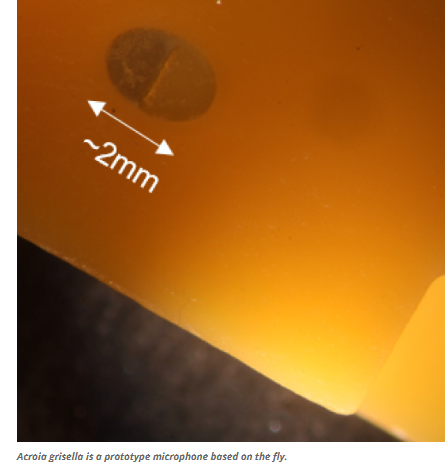


it’s always all about accuracy. I think that blood is one version. I think the CGM is another, and now a third version? I believe we might have an average station. A finger prick, implantable CGM, External skin scan Blood sugar.
We step up, get pricked, scanned and then we place our arm in a microwave like device, it takes three blood sugars averages them and wham we have our triple BS.
I can see the commercial. It’s the world’s first ever triple blood sugar (TBS) test. Because triple is better. Each test costs $54.69.
Yeah, I will get one for sure.
——–
And for the record. If Medicare finds out I have free radical insulin running around, they will declare me healed.